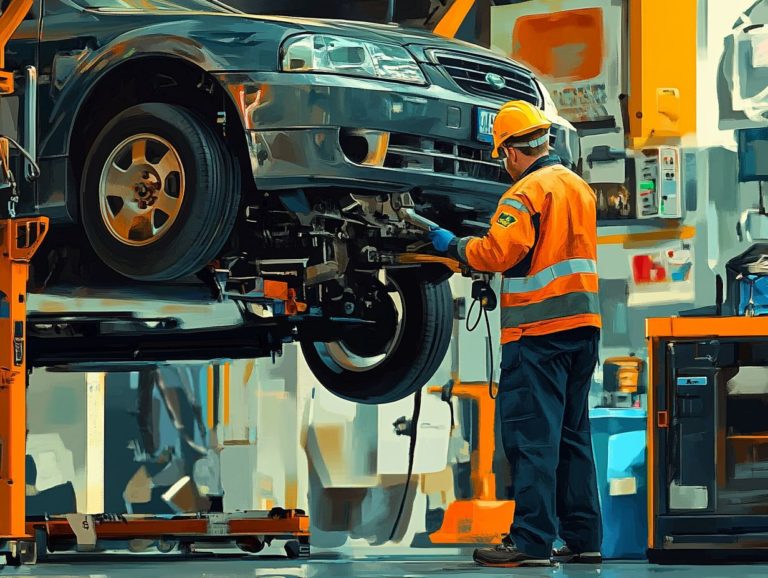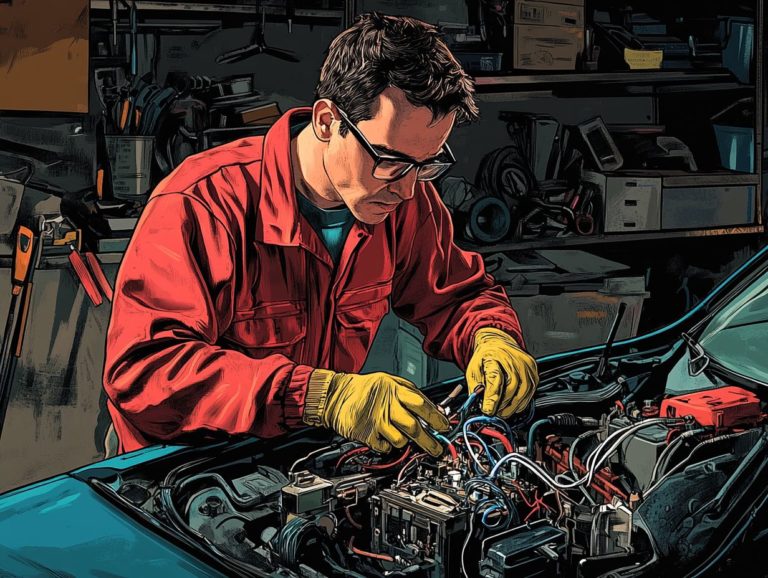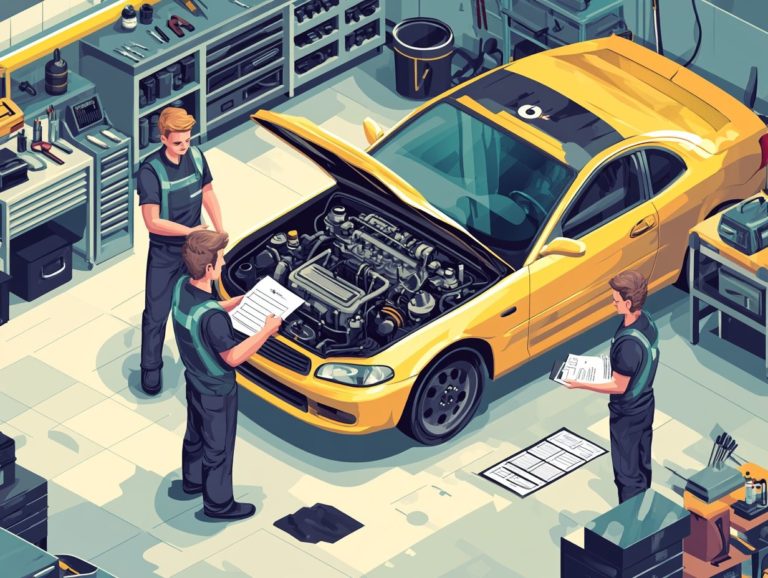What Is the Importance of Tire Alignment?
Tire alignment is an essential part of vehicle maintenance that is often overlooked. Proper alignment not only enhances your car’s performance but also extends the lifespan of your tires. This can save you money in the long run.
This discussion explores what tire alignment means and why it is crucial for your vehicle’s functionality. You will learn how to identify signs of misalignment, understand common causes, explore effective checking methods, and discover tips for maintaining proper tire alignment. All of this contributes to a safer and smoother driving experience.
Contents
Key Takeaways:
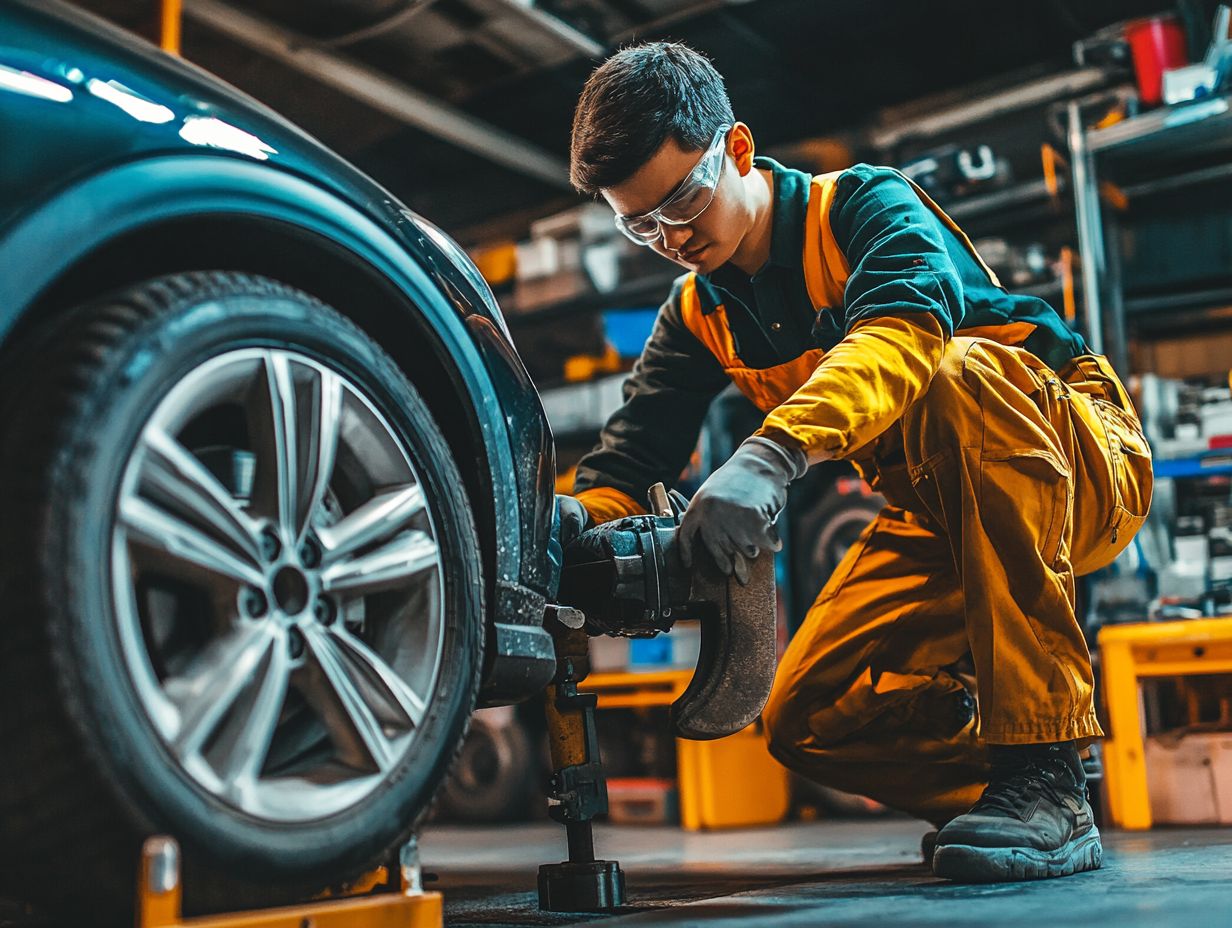
- Proper tire alignment is crucial for optimal vehicle performance and safety.
- Misaligned tires can lead to uneven wear and tear, shortening their lifespan and costing you more over time.
- Regular maintenance and professional alignment services are vital for keeping your tires in good shape and prolonging their life.
Understanding Tire Alignment
Tire alignment, commonly referred to as wheel alignment, is a mechanical adjustment. This adjustment ensures your vehicle’s tires are positioned correctly in relation to each other and the road.
Proper alignment extends your tire’s lifespan and significantly affects your comfort and fuel efficiency.
When the alignment is off, it can lead to uneven tire wear and steering pull, which can affect your safety.
The Importance of Proper Tire Alignment
Proper tire alignment is essential for maintaining optimal vehicle performance. It influences how well your vehicle handles, affects fuel efficiency, and extends tire life.
Misalignment can create various issues, negatively impacting your driving experience and compromising your safety.
Impact on Vehicle Performance
Tire alignment has a significant impact on vehicle performance. Misalignment may cause steering wheel vibrations and reduced handling responsiveness.
If your vehicle pulls to one side, you have to work harder to maintain a straight path, which can be exhausting. Additionally, improper alignment leads to uneven tire wear, forcing you to replace tires more frequently.
Correct alignment also supports the suspension system, helping it absorb bumps effectively and improving your overall comfort.
Seeking professional alignment services can enhance these aspects, leading to safer driving and better fuel efficiency.
Effects on Tire Wear and Lifespan
The importance of proper alignment becomes clear when you think about tire wear and lifespan. Misaligned tires often show uneven wear, reducing performance and longevity.
This wear occurs when tire angles drift from manufacturer s specifications, increasing friction that accelerates wear. When tires aren t aligned, they may wear more on one side, affecting traction and safety.
Don t wait! Regular alignment checks can save you money and enhance your safety.
By keeping your tires aligned, you improve handling and ride comfort while extending tire lifespan. This proactive approach maximizes both safety and efficiency, making every drive enjoyable.
Book your alignment check today for a safer ride tomorrow!
Signs of Misaligned Tires
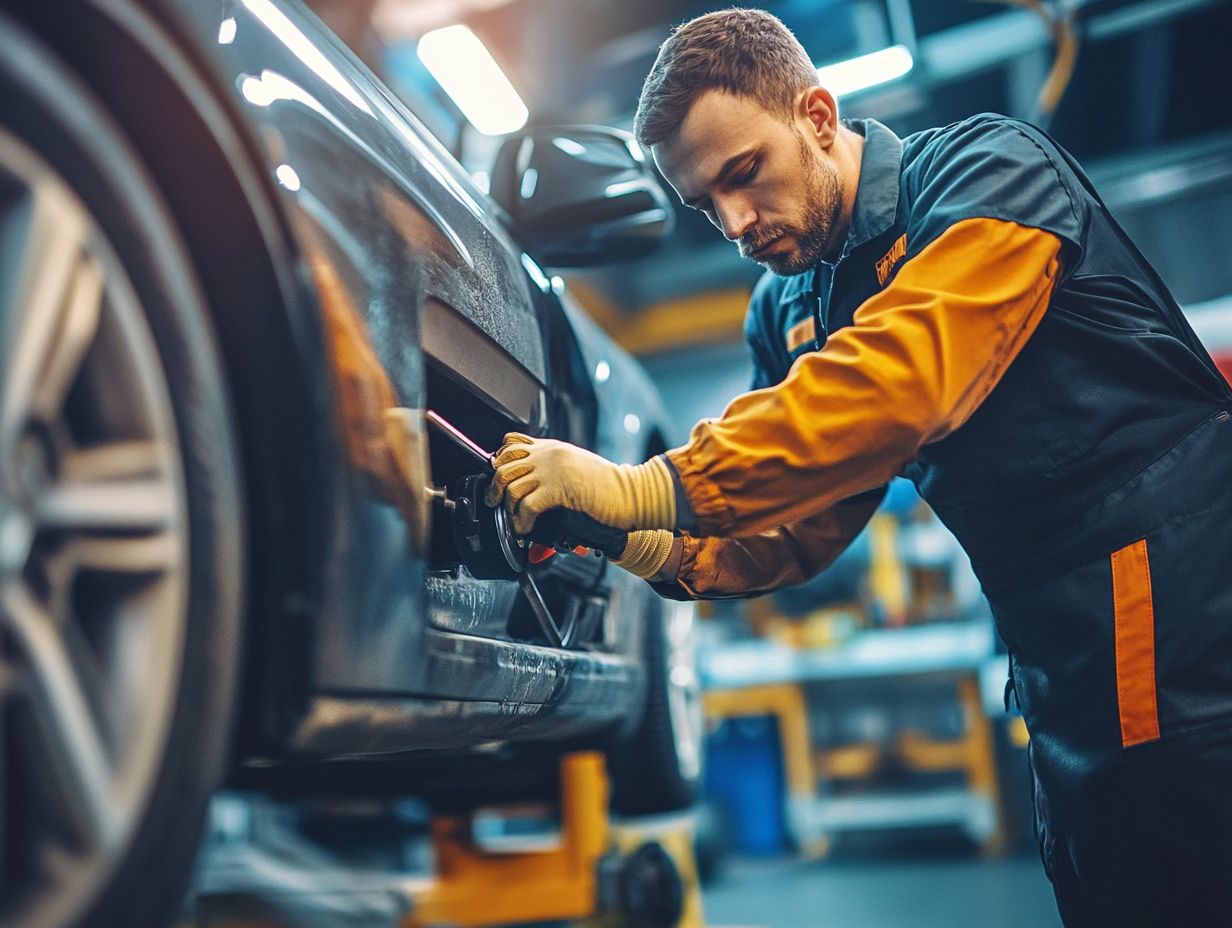
Identifying misaligned tires is essential for ensuring your vehicle’s safety and enhancing its performance. Look for signs like a noticeable pull in the steering, uneven tire wear, and unsettling vibrations while driving.
By conducting regular visual inspections, you can catch these problems early, preventing them from escalating into more significant concerns.
Common Symptoms to Look For
Watch out for common symptoms of misaligned tires. These include a steering pull to one side, unexpected vibrations while driving, and uneven tire wear patterns. All of these symptoms can significantly disrupt your driving experience.
You may also notice that your vehicle requires constant adjustments to stay centered in its lane or that the steering wheel feels off-center even when you’re driving straight.
A drop in fuel efficiency is another red flag. The extra friction from improper alignment can take a toll on your gas mileage. If you hear any unusual noises while turning, it might indicate more serious alignment issues that can affect tire longevity and compromise your overall vehicle safety.
Stay alert! Spotting these signs guarantees a smoother ride and saves you from costly repairs!
Causes of Tire Misalignment
Tire misalignment can come from various factors. These include poor driving habits, rough road conditions, and incorrect mechanical adjustments. Each factor can gradually affect the angles of the parts that hold your tires, leading to alignment issues over time.
It’s vital to be aware of these elements to keep your vehicle performing at its best.
Factors that Contribute to Misalignment
Several factors can lead to tire misalignment. Frequent encounters with potholes, aggressive driving, and the gradual wear of suspension components can all contribute to alignment problems over time.
Hitting curbs or driving on rough terrain can worsen the situation, causing uneven tire wear and affecting handling.
Regular maintenance, like wheel balancing and checking tire pressure, can significantly reduce these effects, but it often gets overlooked.
If you re driving an older vehicle, weak strut mounts or bushings can affect your alignment, leading to a series of problems. Understanding how these elements affect tire performance highlights the importance of timely inspections to prevent serious complications.
How to Check and Adjust Tire Alignment
Checking and adjusting tire alignment is a crucial maintenance task. Whether you choose to hire professional technicians or go for a DIY approach, ensuring proper alignment is key.
Taking these steps will help you avoid alignment issues and keep your vehicle performing at its best.
Professional Services vs. DIY Methods
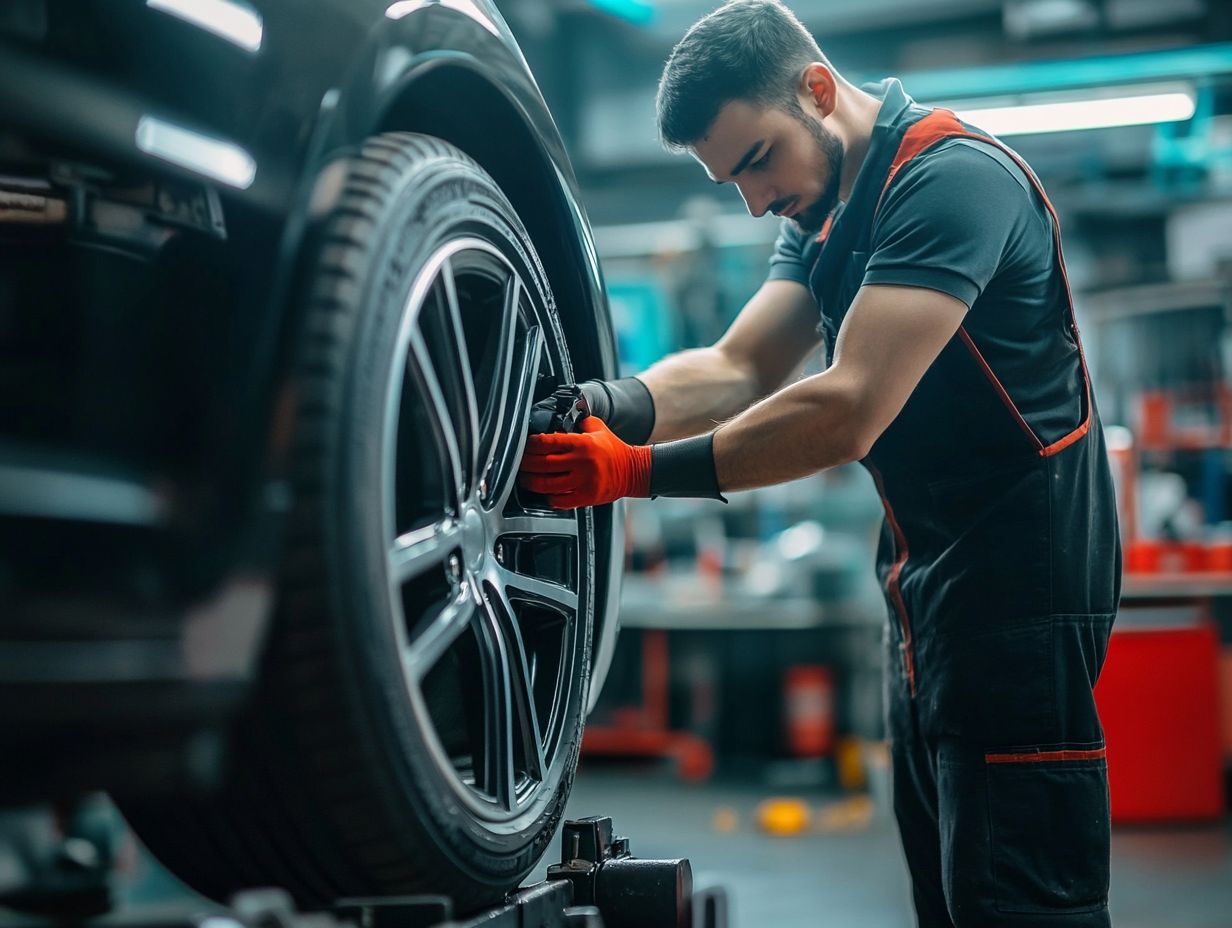
When it comes to tire alignment, you often face a choice: should you go for professional services that offer precise mechanical adjustments or take the DIY route, which may provide temporary fixes but lacks expert accuracy?
Professional alignment services use advanced machinery and have skilled technicians who achieve the meticulous measurements necessary for accurate tire alignment. This expert precision minimizes tire wear and enhances handling, giving you a smoother and more enjoyable driving experience.
On the other hand, DIY methods may seem appealing due to their cost-effectiveness and convenience, but they often rely on basic tools and miss that critical level of detail, which can lead to complications later.
Knowing the pros and cons of professional vs. DIY alignment can keep your vehicle running smoothly. Don t wait! Check your tire alignment today to keep your ride safe and efficient!
Maintaining Proper Tire Alignment
Maintaining proper tire alignment is crucial for your vehicle’s safety and performance. It demands more than just the occasional alignment check and adjustment. It also calls for mindful driving habits and taking care of your tires to prevent alignment issues from arising over time.
Tips for Keeping Tires Aligned
- To keep your tires aligned and maximize their lifespan, consider implementing a few practical tips.
- Adapting your driving habits to steer clear of potholes can make a world of difference.
- Being mindful of abrupt stops and sharp turns can significantly reduce unnecessary wear on your tires.
- It s crucial to check your tire pressure monthly; incorrectly inflated tires can lead to alignment issues.
- Rotating your tires regularly promotes even wear, contributing to improved handling and mileage.
- Investing in expert tire alignment services annually or after significant incidents like hitting a curb can prevent misalignment and bolster your safety on the road.
Keep your ride safe and smooth! Don t wait until it s too late check your alignment today!
Frequently Asked Questions
What Is the Importance of Tire Alignment?
Tire alignment is an essential maintenance procedure for your vehicle. It ensures your tires are straight and in the right position according to the manufacturer’s specifications.
Why is tire alignment important?

Tire alignment is crucial for performance and safety. It also helps your tires last longer and saves you money.
How often should tire alignment be done?
Tire alignment should be done every 6,000-10,000 miles or whenever you notice uneven tire wear, steering wheel vibration, or your vehicle pulling to one side.
What are the signs that my tires need to be aligned?
Signs that your tires need to be aligned include uneven or rapid tire wear, steering wheel vibration, and your vehicle pulling to one side while driving.
Can I align my tires myself?
While it is possible to align your tires yourself, it is not recommended. Tire alignment requires specialized equipment and expertise, so it is best to have a professional perform the procedure.
How much does tire alignment cost?
The cost of tire alignment can vary depending on the make and model of your vehicle, but it typically ranges from $75 to $200. It is a small price to pay for the safety and longevity of your tires.
Take control of your vehicle’s safety book your tire alignment today!


